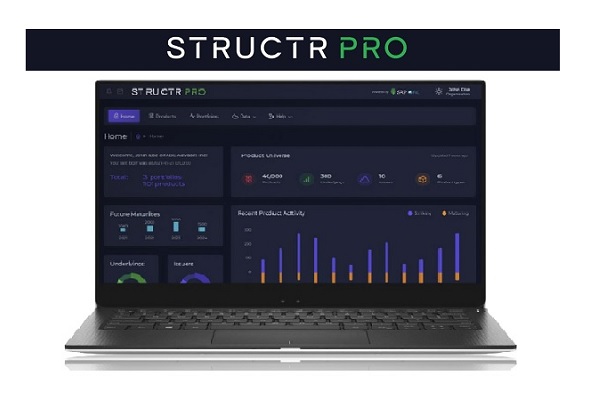In March 2022 US regulatory body FINRA published a notice (reference 22-08) on complex products. This was the first major follow up in this area after its original document on the subject ten years ago (named 12-03).
What counts as complex?
The current notice opens up many interesting issues about how to address investor protection in today’s markets. Back in 2012 when FINRA first defined complex products as a concept the investment world was a very different place, coming out of the dot-com crash of 2000 and latterly the global financial crisis of 2008. FINRA took great care in providing examples of complex products and poor practices but stressed that this did not define the full range of such products. Instead, it defined the characteristics of complex products and the use cases likely to cause problems. Back in 2012, the main types of products highlighted were Asset backed securities, structured notes (in particular steepeners, worst-ofs and those with barrier protection) and various types of funds including volatility, leveraged and inverse.
FINRA stated in the original document “The list is not exhaustive. Moreover, many products that do not possess the characteristics described may nevertheless require heightened compliance and supervisory procedures due to the risks they present. However, the general characteristics should assist firms in establishing policies and procedures to identify products that are sufficiently complex to warrant enhanced oversight. The fundamental point for firms is that if a product has similar features of complexity [to the list presented] then firms should err on the side of applying their procedures for enhanced oversight to the product.”
The two US regulators of SEC and FINRA have historically adopted an approach of disclosure requirements and market oversight. This has been supplemented by post-event enforcement action, which can take years to resolve.
Of the pair of regulators, FINRA Is tasked to subject its members to a more detailed and pro-active regime. Its role is different to the purely rule and law setting SEC. The 12-03 notice heralded a rather more principles-based approach, in line with some other national regulators, as cited by FINRA at that time.
Investments that concern FINRA
There have been many changes and developments in markets in the last ten years but the list of products that may be considered complex as detailed by FINRA in the updated notice do not show a fundamental change of approach by FINRA or overwhelming trends within markets towards complexity. As well as re-iterating previous investment types described ten years ago, Notice 22-08 describes newer investment types such as defined outcome ETFs, RILA (annuities), Cryptocurrency linked investments and Interval funds.
Structured products do not feature so prominently as before, perhaps indicating a greater acceptance and understanding of the asset class supported by stronger practices in the sector. FINRA does point out that “The structured retail products market in the U.S. continues to see strong growth, with one commonly cited market data source indicating continued record volumes of products launched”. This source is www.structuredretailproducts.com.
The array of products that have been addressed by FINRA across both papers show the breadth of the problem it is trying to address. If a given investor has certain goals, risk tolerance and market view then they should be able to choose an investment that will deliver for them as they intend and expect. The main problem with complexity is that it interferes with the investor’s ability to make such judgments. Complexity can also hide high risk or excessive fee levels. Asset backed securities, interval funds, Index linked annuities and the more complex and long dated structured products all have the potential to cause such issues. Rather different in nature are leveraged and inverse funds and the newer defined return ETFs. These are arguably more straightforward but will have received attention because of their popularity. Leveraged funds are not inherently difficult to understand but do have some technical characteristics. However their main issue is their level of risk. Off the back of a couple of years of stockmarket growth there may be an illusion that the investments are an easy one-way street to success. The same is true of cryptocurrencies although the latest crash will have come as a sober reminder to many. The case of defined return ETFs is a little more subtle since the biggest threat is missed positive appreciation in a rising market, this is the likely reason for their inclusion.
Dealing with complex products from a regulatory perspective is not easy. Traditionally, FINRA has adopted a policy of requiring appropriate education, training and disclosures. Additionally, firms are required to get sufficient investor attestation for them to be allowed to deal in certain investments. These measures have some similarities to the target market concept of European regulators as defined in MIFID II.
Implications for self-directed platforms
Notice 22-08 also highlighted the importance of sufficient oversight in a non-advised context – “These concerns may be heightened when a retail customer is accessing these products through a self-directed platform and without the assistance of a financial professional, who may be in a position to explain the key features and risks of the product to the retail investor.” Self-directed platforms are not new, brokerage accounts have been used for decades and back in the dot-com era of 1998-2000 the term “Nasdaq day trader” was coined to describe such activity. However their usage and the array of products has undoubtedly grown over the years. This has also been fuelled by the rise of social media postings and the trend of excited discussions between investors.
Therefore we can expect that FINRA will apply particular scrutiny to such platforms, but it will be a constant challenge to be able to effectively regulate these firms since it is notoriously difficult for law makers and regulators to keep pace with technological advances and ensure a level playing fields that has no exceptions.
Product intervention and public reaction
Some of the measures hinted at in 22-08, together with recent SEC statements sound very close to the concept of “product intervention” where a regulator directly or indirectly makes activity in certain product types difficult or impossible. Product intervention has only generally been seen in smaller and more centralised markets, such as Belgium, Switzerland and Hong Kong. Such measures go against the culture of a market such as the US and are fraught with difficulty. It can lead to legal challenges and investment firms will look for loopholes or workarounds instead. It also becomes very difficult for a regulator to define the boundary of such exclusions. An unintended consequence of a regime with product intervention is that any investment or investment type that has not been excluded can be taken to be implicitly approved or endorsed.
FINRA invited comments to be submitted publicly over a 6 week period. The scale of replies was staggering, over 10,000 posted on the FINRA website compared to a typical level of response of less than 100 for other recent notices that invited feedback. The vast majority of comments were from investors unhappy at the prospect of being restricted from dealing in leveraged or inverse funds. Example comments include “Leveraged and inverse funds are important to my investment strategies and I should have the right to choose my investments free from government intrusion” and “Public investments should be available to all of the public, not just the privileged.”
These sentiments highlight another element of investment complexity. Investors are not a uniform group and what may be complex to one type of investor is perfectly clear to another. Equally what may be deemed complex by the majority today will likely become commonplace over time as familiarity increases.
Innovation and complexity are opposing forces and regulators have a difficult task in allowing the market to tread a middle ground. Through this notice FINRA is laying out its vision and approach to serve US investors over the coming years.
Tags: RegulationA version of this article has also appeared on www.structuredretailproducts.com
Image courtesy of: John Barkiple / unsplash.com















